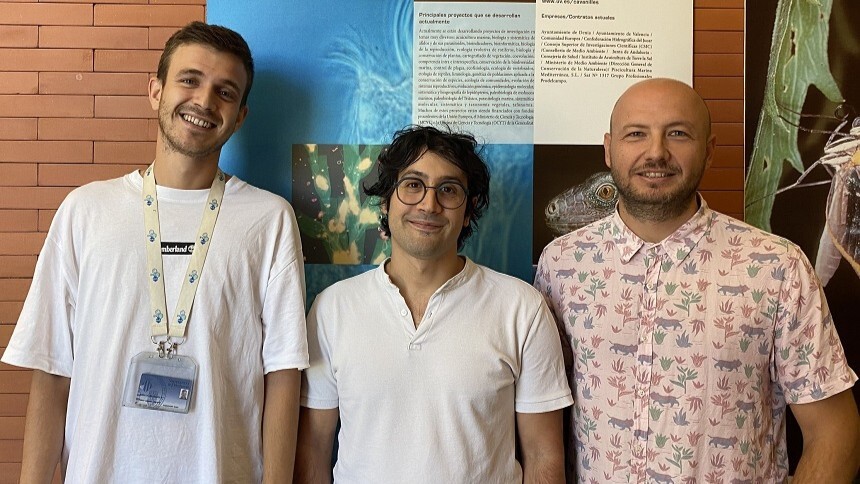Pablo Amador, Valerio Gherardi and Andreu Rico, researchers from the Limnology group of the Cavanilles Institute of Biodiversity and Evolutionary Biology (ICBiBE), of the University of Valencia Science Park (PCUV), have developed a pioneering study that allows to follow, step by step, the path taken by agricultural pesticides in the Albufera Natural Park, from their application in rice fields to their arrival at the lake and the Mediterranean Sea. Pesticides are carried through run-off and drainage water, contaminating the aquatic ecosystems of the natural park within a few hours after application
Researchers have modelled the environmental dispersal of eight pesticides applied over a ten-year period on rice paddies in the nature park under real conditions of climate, agricultural management and water circulation. The study, published in the journal Environmental Pollution, integrates a high-resolution hydrological model that simulates agricultural management in the paddy field with a hydrological model implemented on a regional scale.
"The results of the study show that about 35 tons of pesticides are applied annually in the Albufera Natural Park, of which seven are emitted by the rice fields to the water of the park and approximately 1.5 of them enter the Albufera lake," explains Pablo Amador. It is also concluded that 0.6 tonnes of pesticides are emitted from the collars to the Mediterranean Sea and that the most applied compound is the herbicide Bentazona, with 11 tonnes. Rice cultivation occupies approximately 130 km2 of the total area of the park (209 km2).
The tool used by researchers at the Cavanilles Institute of Biodiversity and Evolutionary Biology (ICBiBE), located in the scientific-academic area of the University of Valencia Science Park (PCUV), allows accurate representation of water input and output pulses in the park’s traditional irrigation system, as well as tracking the transport of pollutants in water bodies on a daily scale. The resolution achieved far exceeds that of conventional monitoring or environmental models published to date.
"The model shows that pesticides used intensively in rice cultivation are dragged through runoff and drainage water, contaminating the aquatic ecosystems of the natural park within a few hours after application.", Pablo Amador, ICBiBE researcher
Among other issues, says Pablo Amador, "the model shows that pesticides used intensively in rice cultivation are washed through runoff and drainage water, contaminating the aquatic ecosystems of the natural park within a few hours after application". In addition, the compounds most at risk for aquatic organisms in the park are the fungicides Azoxistrobin and Difenoconazole, and the herbicide MCPA. According to Andreu Rico, "the areas with greater risk of exposure are located in the south of the lake, where agricultural return waters with high pollutant loads meet".
The scientific study, in which also participate Yasser Fuentes-Edfuf (University Institute of Enterprise) and Claudia Martínez-Megías (Tragsatec), also concludes that mixtures of up to five pesticides exceeding the risk threshold have been detected simultaneously in the lake during the growing season and that the maximum risk is reached in the month of August, with levels that can cause chronic effects on up to 40% of the aquatic species in the lake. "This fact shows that the pollution goes beyond the rice fields and affects the entire water system of the Natural Park," says Andreu Rico.
Source: UV News
Amador, P., Gherardi, V., Fuentes-Edfuf, Y., Martínez-Megías, C., Rico, A. (2025). Thinking big! Landscape-scale evaluation of pesticide pollution and ecological risks in a protected Mediterranean wetland. Environmental Pollution, 384, 126918. https://doi.org/10.1016/j.envpol.2025.126918
--
Recent Posts


